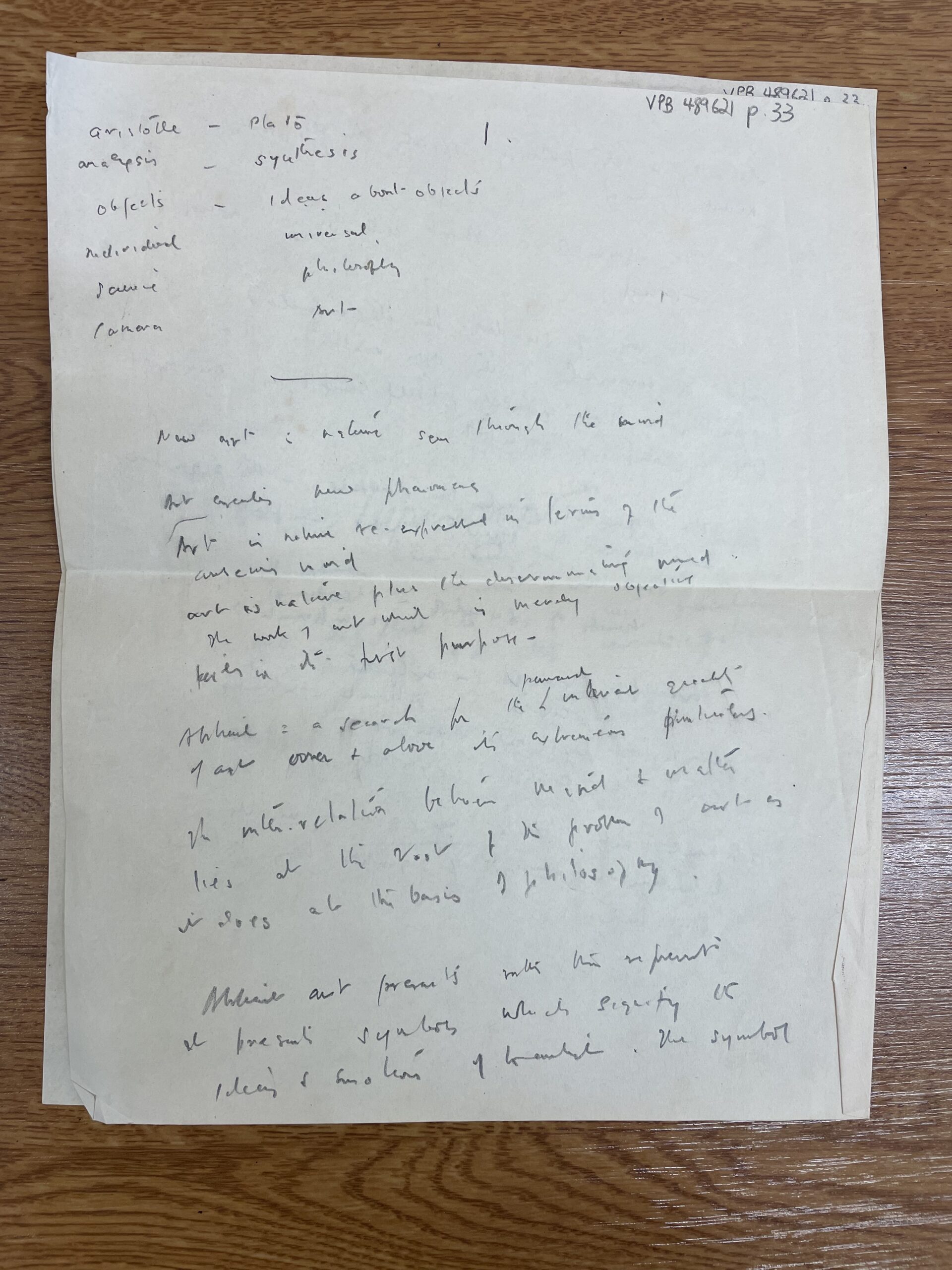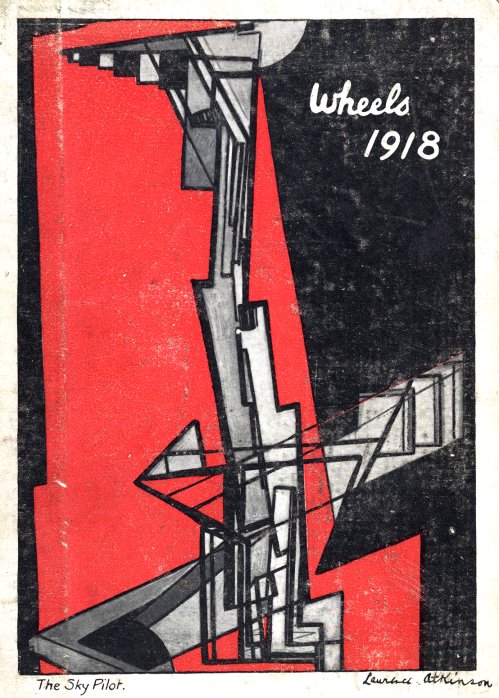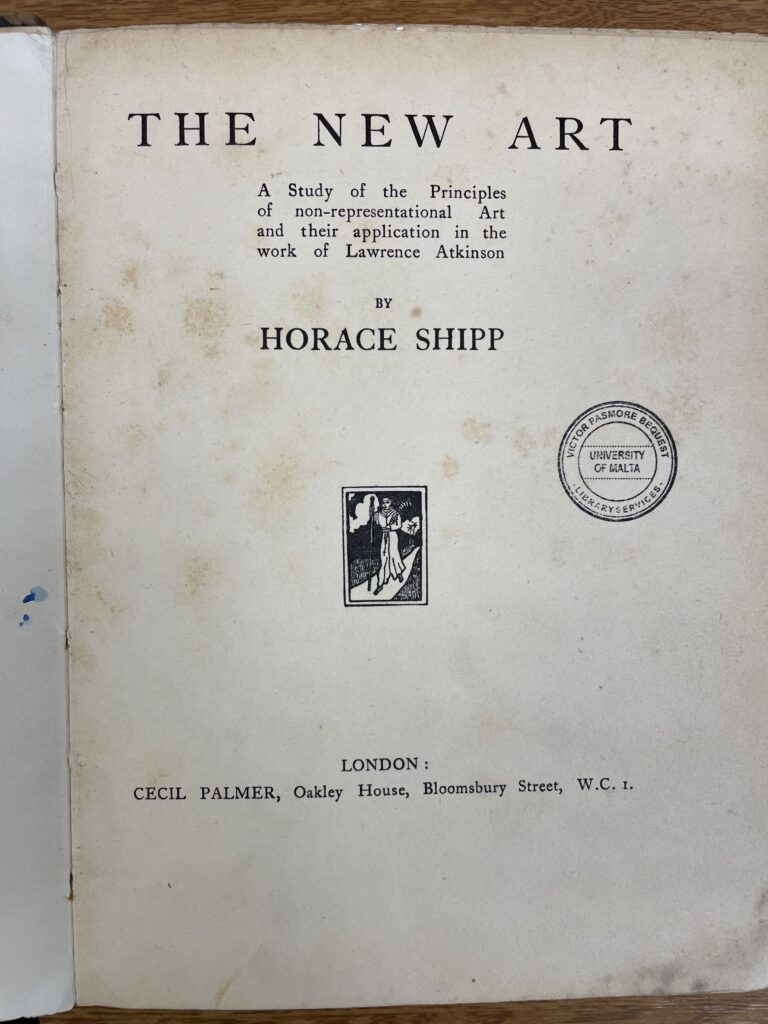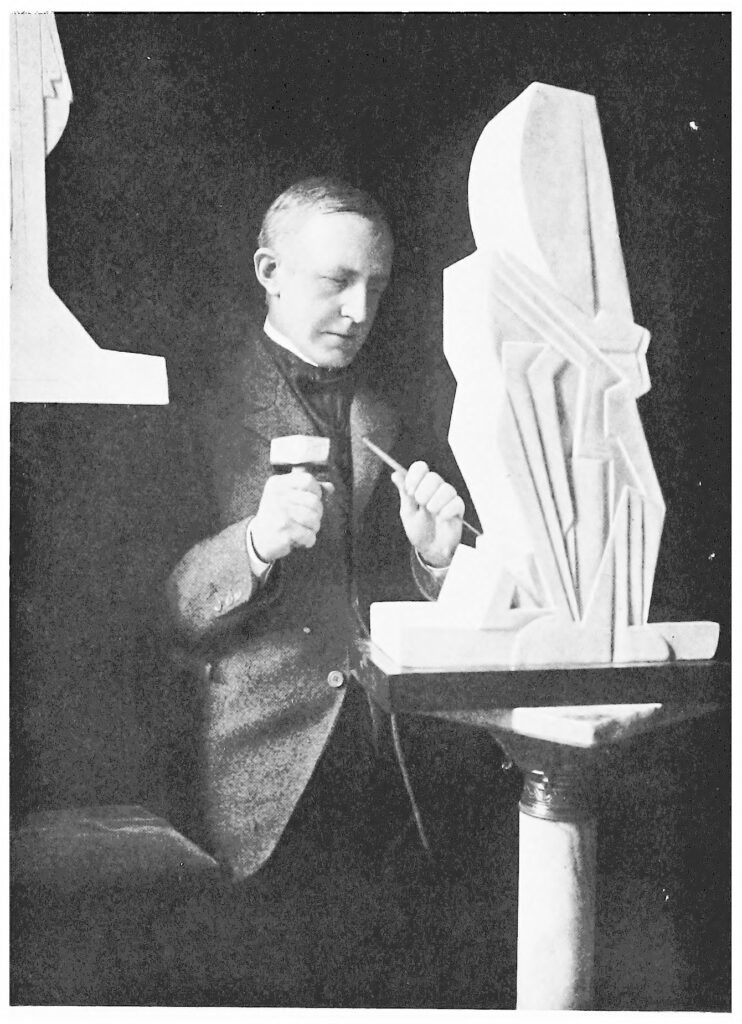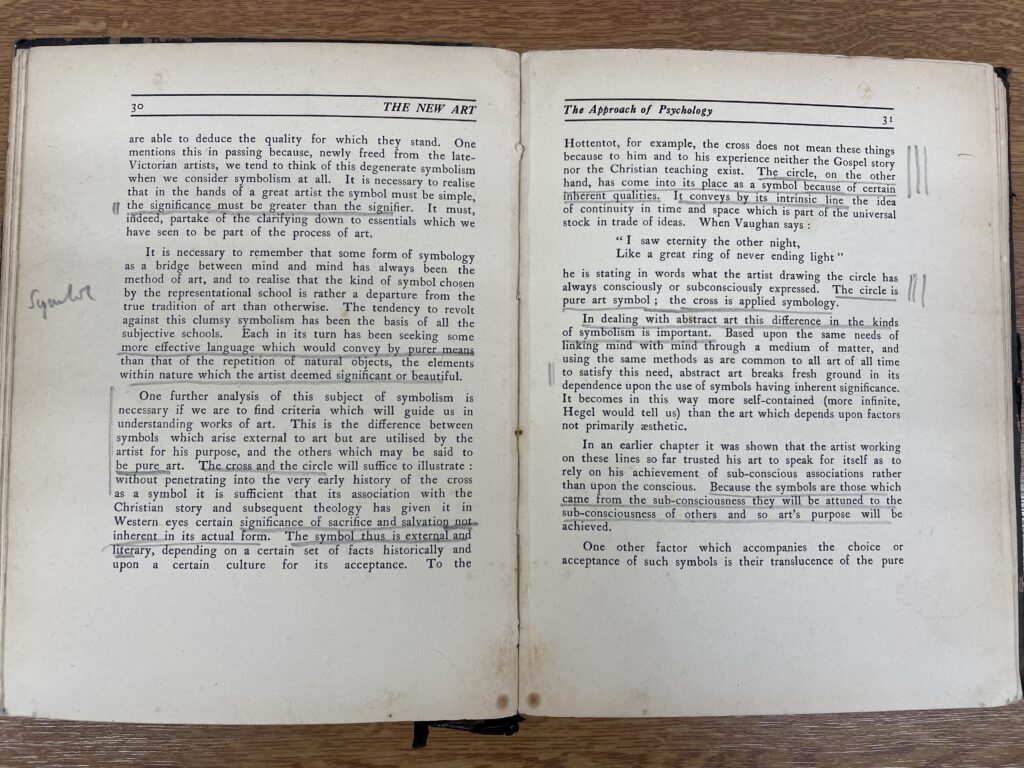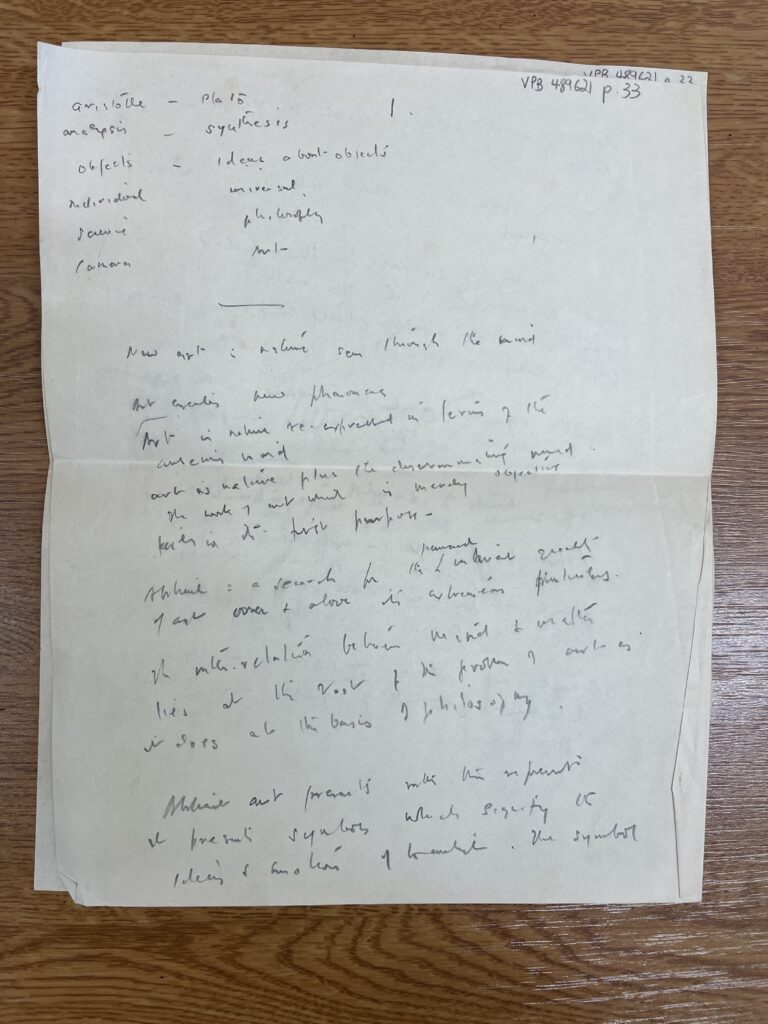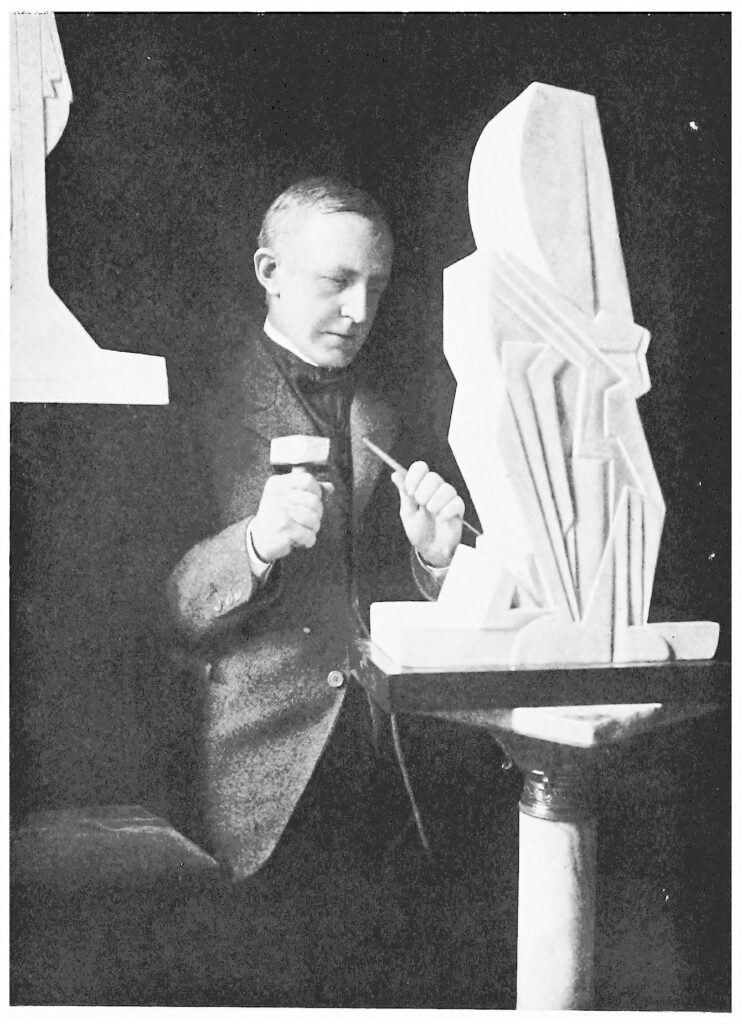THE NEW ART
Antonia Critien
Taking a closer look at this book one can immediately see why Pasmore had it in his library, why it’s so well marked, and why he felt compelled to make his own notes from the text. The New Art: A Study of the Principles of non-representational Art and their application in the work of Lawrence Atkinson (by Horace Shipp, published in London 1922) is divided into two parts. The first part deals with art in theory, exploring the philosophy, psychology, technique and history – all of which Pasmore was deeply invested in, in relation to the development of art, particularly his own. He marked large areas of text from the chapter The Approach of Psychology, with particular reference to symbolism. I regard my work as symbolic. The only future of abstract painting is through symbolism, of sorts (Pasmore to Peter Fuller 1988). Inserted in the book is a page of his handwritten notes (almost impossible to decipher), highlighting the main points of ‘the new art’. The second part of the book applies the discussed theories to the work of Lawrence Atkinson (1873-1931). Originally a singer and musician Atkinson turned to painting and sculpture after a tragic train accident. He was a member of the Vorticist movement in England which promoted imagery of the new age – machinery, urban environments and so forth, in a geometric, loosely cubist style. Vorticism came to an end with the onset of the First World War when an eventual return to traditional art was welcomed. Atkinson however developed an abstract or what he preferred to call it, ‘synthetic’ artistic style that relied on insinuation, on depicting only the essence of his subject matter– allowing the viewer to make connections via the subconscious. This, alongside an underlying rhythmic quality forever present thanks to his musical background would undoubtedly have interested Pasmore who had strong views on the music-art connection. The New Art is the only full study published on Atkinson and stems mainly from various conversations between the artist and the author. It’s a book that touches on many of the theories Pasmore explored and studied himself, yet it is also a study of an artist finding his way in a post war period – an environment Pasmore was also familiar with.
(See article Lawrence Atkinson, Sculpture, and Vorticist Multimediality by Nathan Wadell, 2016)
In 2018, Victor Pasmore’s children, John Henry Pasmore and Mary Ellen Nice, donated over 500 books and exhibition catalogues to the University of Malta, Archives and Rare Books Department. The Victor Pasmore Gallery is open to visitors at APS House, 274 St Paul Street, Valletta.

